FOWL PRODUCTION
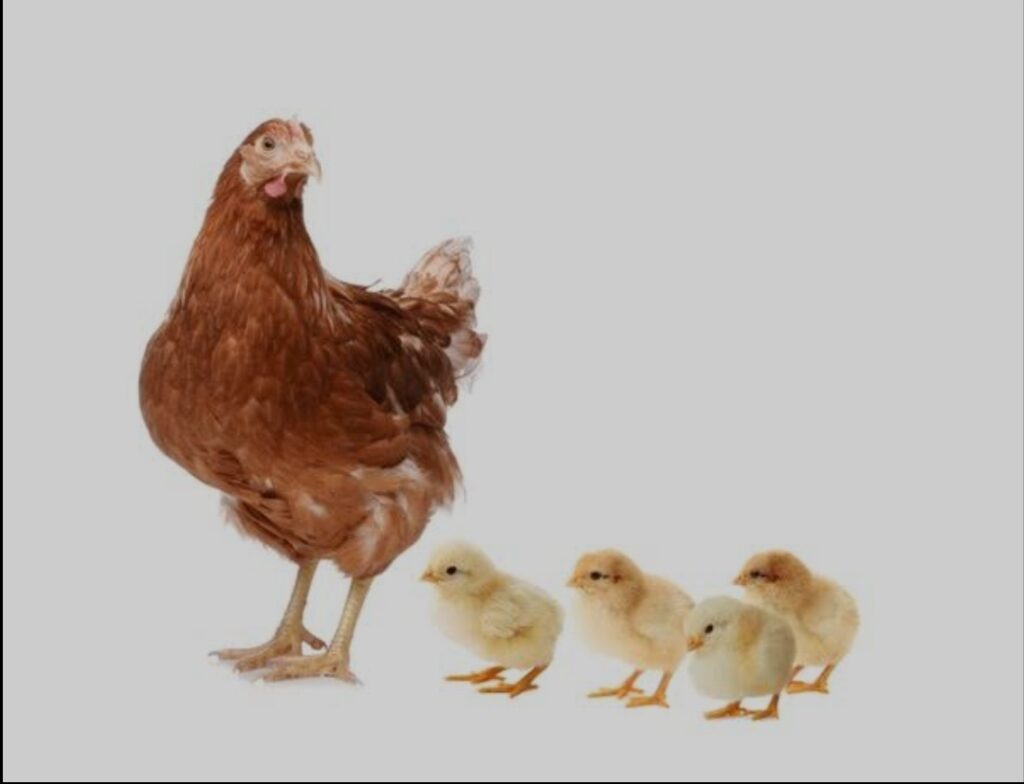
In Nigeria, fowl and turkeys are the major birds poultry farmers focus on rearing. Fowl is the most preferred. About 85 million (42%) of Nigeria’s population, 4 in every 10 Nigerian, are into poultry production whether on subsistence basis or commercially. There is hardly any part of the country where you would not see these two-legged creatures roaming around the neighbourhood or being reared.
A report released in 2020 by world bank on poultry production in Nigeria showed that Nigeria has the 2nd largest fowl population of about 180 million poultry birds annually which is estimated to be 206,139,587 according to the statistics published by the World Bank. With this estimation, it has being discovered that an estimated poultry meat of 1.2 million is smuggled into the country from the Benin Republic alone. Meaning that the 180 million estimation of poultry birds produced in the country cannot meet the demand of the populace for poultry products .
The major types of fowl reared in Nigeria are Broiler, layers, cockrel and noiler . These bird are reared for meat (chicken), egg, and feathers. Broiler, cockrel and noiler are reared for meat only, layers for eggs and meat.
Broilers make up 70% of the chicken population in Nigeria, while layers account for 30%. Broiler meat is said to be the fastest growing protein production in the world because within 16 weeks, it would have developed enough meat and reached table size.
BROILER PRODUCTION
Basically, broilers are raised specifically for meat production. Broilers are a hybrid of the egg-laying chicken, both being a subspecies of the red jungle fowl. They are known for their white feathers, yellowish skin and thick legs.
The two breeds available in Nigeria are Ross and Cobb.
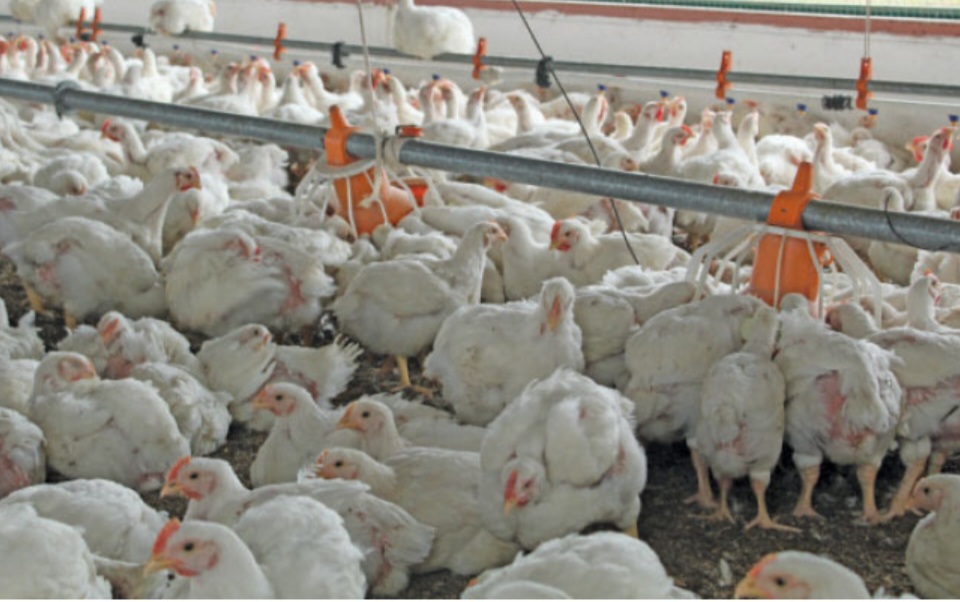
To select an ideal breed for raising, select a good chick from a good breeding flock. This can be done by purchasing the chicks from an ideal poultry farm. The day-old chicks to be selected must be of good quality such as clear vent without dropping stocked to the vent, no paralysed or deformed legs and body parts, etc. This can be done by carefully checking of the chicks at point of purchase.
ARRIVAL AT FARM. (HOUSING AND MANAGEMENT)
Chicks purchased at a reputable farm should be transported early in the morning before sunrise and or in the afternoon after the sun intensity had reduced to prevent stress on the chicks. Two to three days before the arrival of the chicks, the brooding unit should be washed and disinfected. Brooding nylon and lightening source should be put in place. it is important the chick house is properly ventilated and sealed from any draft wind at chick level especially during the first two weeks after birth. The brooding nylon and the lightening source will help provide regulate the brooder unit. The feeding trays and drinkers well washed and other brooding equipment installed. The brooding unit should be dry within the two to three days and wood shaving laid on the floor of the unit. Medication and vaccines should be made available before chick arrival. As the chick arrived, put them immediately in the brooding unit.
During brooding, you should place a chick guard for the first week around them. Also, adjust the hovers temperature to 95 degree Fahrenheit in the first week and reduce by 50F every week until 70 degree Fahrenheit.
There is also the need for thermoregulation because a day old chick cannot regulate its own body temperature so there’s the need to supply the thermal neutral zone for it at arrival and during the period of stay in the unit. If you put the chick on a cold floor, it will refrain from eating and be inactive. This is a bad sign because the most critical period is the first five days. By the time the chick is 2 weeks old, it can now regulate its body temperature. Therefore, heat source can be reduced or removed as the chicks would have grown feathers to regulate their body temperature. Proper temperature management will assure high weight gain, lower Food conversion ratio, lower cull rate, lower mortality and practically reduce bird growing costs.
Note: if the chicks gether together close to the heat source, it means the environment is cold. If the move away from the heat source, it means the environment is too hot. But if they scatter evenly in the brooding unit, this is a good sign of heat circulation.
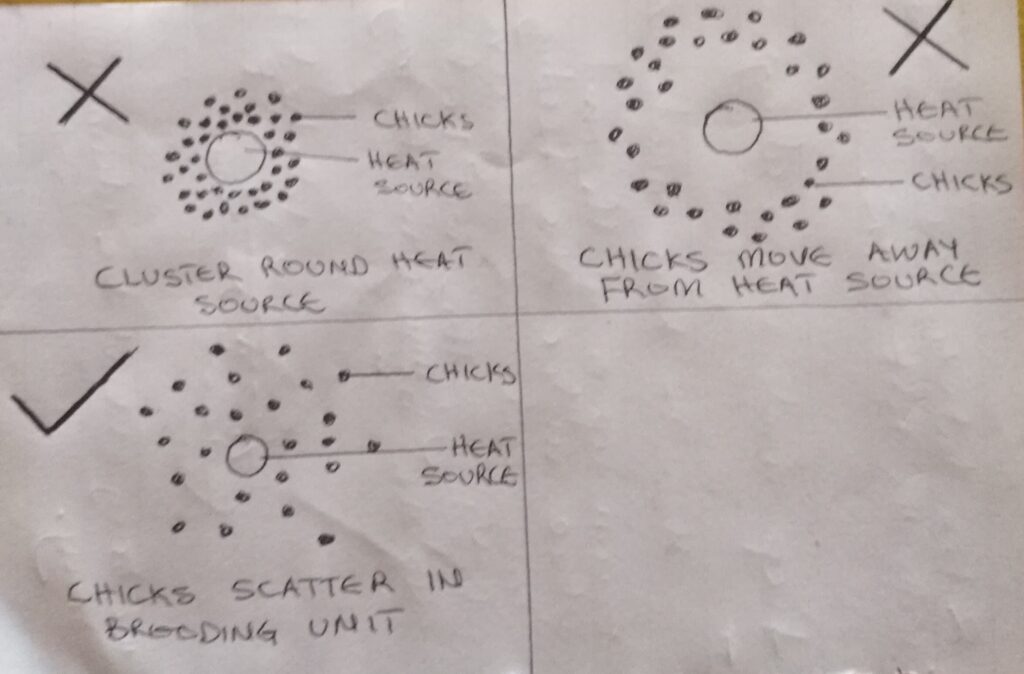
The chicks should be fed with pre starter mesh and medication and vaccines administered at appropriate timing. Also, the wood shavings should be changed on regular occasion (nearly every three to four days progressively).
Other things to put into consideration are: enough water should be made available as they increase in age, carefully observe and isolate any identified sick chick, remove all forms of dirt, droppings and wet feed in trays and also predators like rats, snakes and soldier ants are major enemies of poultry, therefore proper sanitation should be carried out around the brooding units. . The chicks would stay in the brooding house for five to six weeks. At two weeks of age, starter mesh should be introduced.
After six weeks, bird should be transfered to grower housing units
LAYER PRODUCTION
In Nigeria, an estimation of 454 billion tonnes of fowl meat and 3.8 million eggs are produced annually from a standing population of 180 million birds to meet the population need (FAO, 2023).
Layer poultry farming is an act of raising or producing eggs from layers poultry birds for the purpose of commercial egg production. This differentiate them from broilers.
Layer Poultry farming has provided income for families through eggs selling, chicken selling and direct employment for poultry farmers and feed mills.
Layer Poultry farming business can be inform of subsistence or commercial layer poultry farming business. Commercial layer poultry farming business entails having layer birds that will be producing eggs in frequent and higher quantity to meet up with the market demands while subsistence layer poultry farming entails producing eggs for the sole aim of the farmer and his family consumption. Therefore, commercial layers farming sought for modern methods, employ the help of a veterinarian, use of properly recommended medications, thorough research and employment of laborers etc to manage the farm.
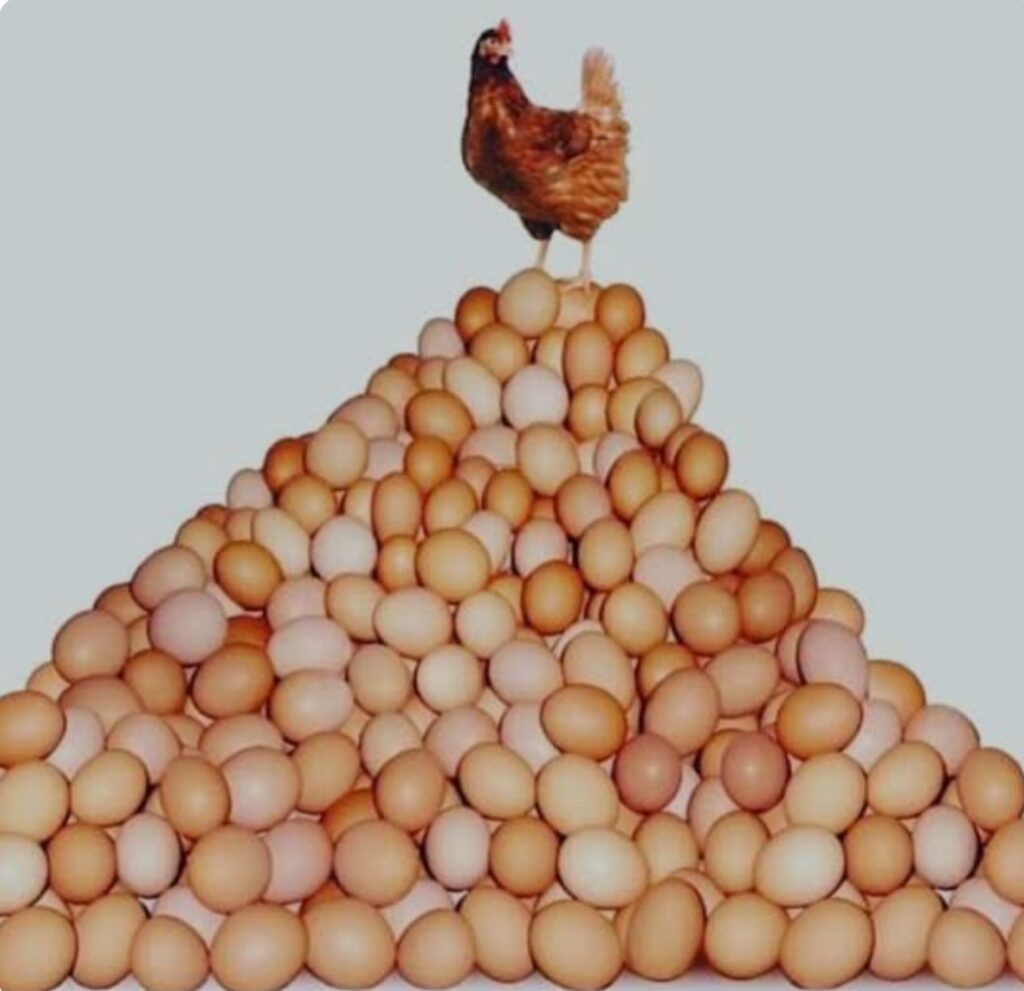
Breed of layers
The breeds of layers can be grouped into two based on the colour of eggs shell laid. Some lay white eggs shell and some breeds are known to lay brown egg shell
The breeds that lay white eggs or eggs with white shell are;
Isa White
Lehman White
Nikchik
Bab Cock BV-300
Havard White
Hi Sex White
Sever White
Hi line White
Bovanch White etc
And the breeds that are known to lay brown eggs or eggs with brown shell are;
Isa Brown
Hi Sex Brown
Sever 579
Lehman Brown
Hi Line Brown
Bab Cock BV-380
Gold Line
Bablona Tetro
Bablona Harko
Havard Brown etc (Steve 2019)
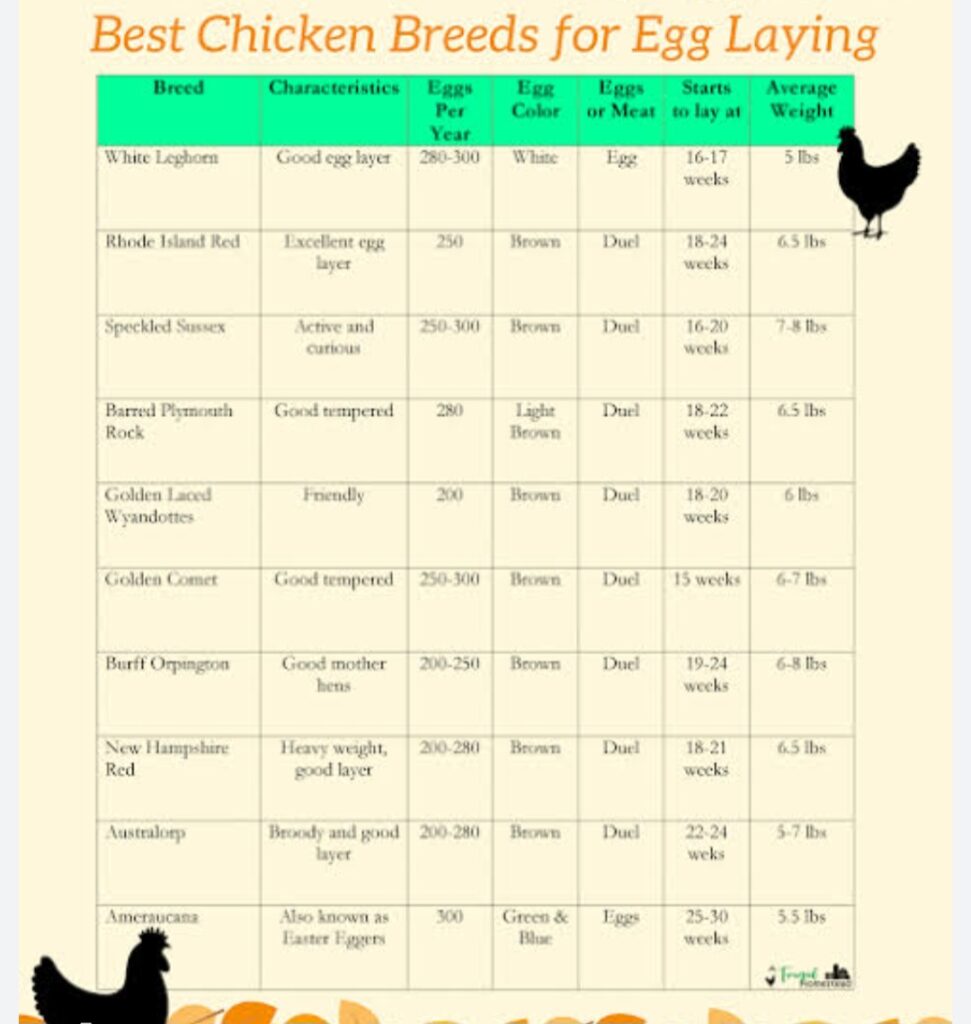
Nutrition values of eggs
Egg is an inexpensive popular food which is a rich source of high quality protein.
The inside of the egg is divided into the white part called the albumen and the yellow part known as the egg yolk.
The white part is known for its high source of protein, vitamin B2 and minerals such as zinc, iron and copper which are the more reason older individual prefer taking the egg yolk.
The egg Yolk; which is the yellow spherical part of an egg that is surrounded by the albumen that contains more calories, fat, cholesterol, fat soluble vitamins A, D, E and K and Lecithin (which is the compound that enable emulsification in recipes such as hollandaise or mayonnaise.)(Steve 2019)
Though some eggs now contain omega-3 acids but this depends on the kind of feed the chicken was fed.
RAISING PULLETS FROM DAY OLD
The day old pullets should be purchased from a reputable hatchery or farm. They should be transported early or late in the afternoon when the weather is cool to prevent stressing the birds. The brooding unit should be cleaned and disinfected, the feeding trays and drinkers properly washed and with litter materials covering the floor and heated up two days before arrival of chicks. The brooder should be well lighted up day and night to allow the day old feed appropriately. Water should be made available on regular basis. Immediately at bird arrival, no feed should be given to the day old but anti stress in water should be administered. After four to five hours, the day old would be hungry and pre starter mesh can be given. After seven days, starter mesh can be fed. By two to three weeks, the pullets would have developed clear sight and feathers therefore light and heat source should be removed. They would be housed in the brooding units for five to six weeks before which they should be moved to grower house. For, Battery Cage system, the pullets should first be raised on deep litter for between twelve to fourteen weeks before moving them into the battery cages. Grower mesh should be fed from six weeks old to when the birds begin to lay.
Daily /Care for the young chicks (0-6weeks); Register and consult with a vetenarian to visit the birds occationally
Always inspect them daily to know their condition.
Put the water and feed to the chicks reach and always wash the equipments every day.
There should always be constant light or electricity.
Pullets should be de-beaked at the 3rd week of age or when recommended by the veterinarian. This is to prevent them from breaking or drinking their eggs when they start laying eggs.
Multivitamins and recommended medication by the veterinarian should be given to them.
Starters feed should be given to them as recommended.
Any died chicks should be disposed off immediately
TYPES OF BROODING
There are two types of brooding
1. Natural brooding; this is when the mother hen directly provides the chicks with warmth. This is recommended for subsistence farming
ARTIFICIAL BROODING; this is when artificially warmth is provided to the chicks in the absent of the mother hen. This is highly recommended when setting up commercial layer poultry farming.
SYSTEM OF THE LAYER HOUSING
There are two housing systems of rasing layer birds,. CAGE SYSTEM OR DEEP LITTER SYSTEM. These two systems can be used for commercial production of layers.
1. BATTERY CAGE SYSTEM; this system includes organized battery cages in the fowl house. The battery cage is partition into cells . Only two to three layer birds can be accommodated per cell. The cage has its feeders, drinkers and egg trap to prevent the eggs from falling, peaking by birds and easy picking by labourers.
The bird droppings fall to ground which should be covered with sawdust or woodshavings or other litter materials to allow ease of packing for dropping disposal
Regular disposal of droppings should be done to prevent poultry odour and disease outbreak.
ADVANTAGES OF BATTERY CAGE SYSTEMS
1. Cannibalism among birds is reduced
2. Birds cannot peak on eggs laid
3. Spread of diseases is reduced
4. Contamination of feed and water is reduced
5. Easy Identification of sick birds
6. Ease of egg picking. etc
2. DEEP LITTER SYSTEM; this system involves covering the concrete floor with saw dust, rice hulks or chopped wheat straw and the feeders with feed and water containers being hanged to the reach of the fowls. Regular change of litter should be done because it produces ammonia gas which is dangerous to bird health. Also, the entrance to the house must have a foot bath to prevent pathogens into the house. Laying areas should be provided for the birds. It can be inform of a long wood partitioned into cells. This can be raised above the ground and the floor covered with litter materials to prevent egg breakage during laying. Regular egg picking should be done so that birds do not peak on the eggs. Bids should be Debeaker to prevent cannibalism.
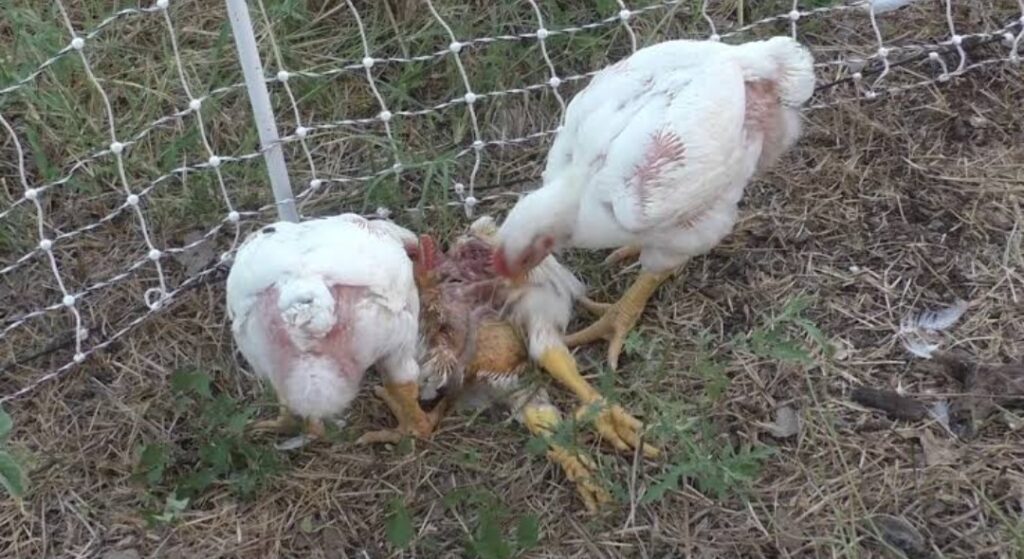
DISADVANTAGES OF DEEP LITTER SYSTEM
1. Cannibalism can occur among birds
2. Diseases can infest all birds with a short time
3. Eggs are prone to breakage or peaking
4. Poor litter management can lead to disease infection
5. Water in drinker and feed in feeders can be soiled with droppings if not properly raised above ground.
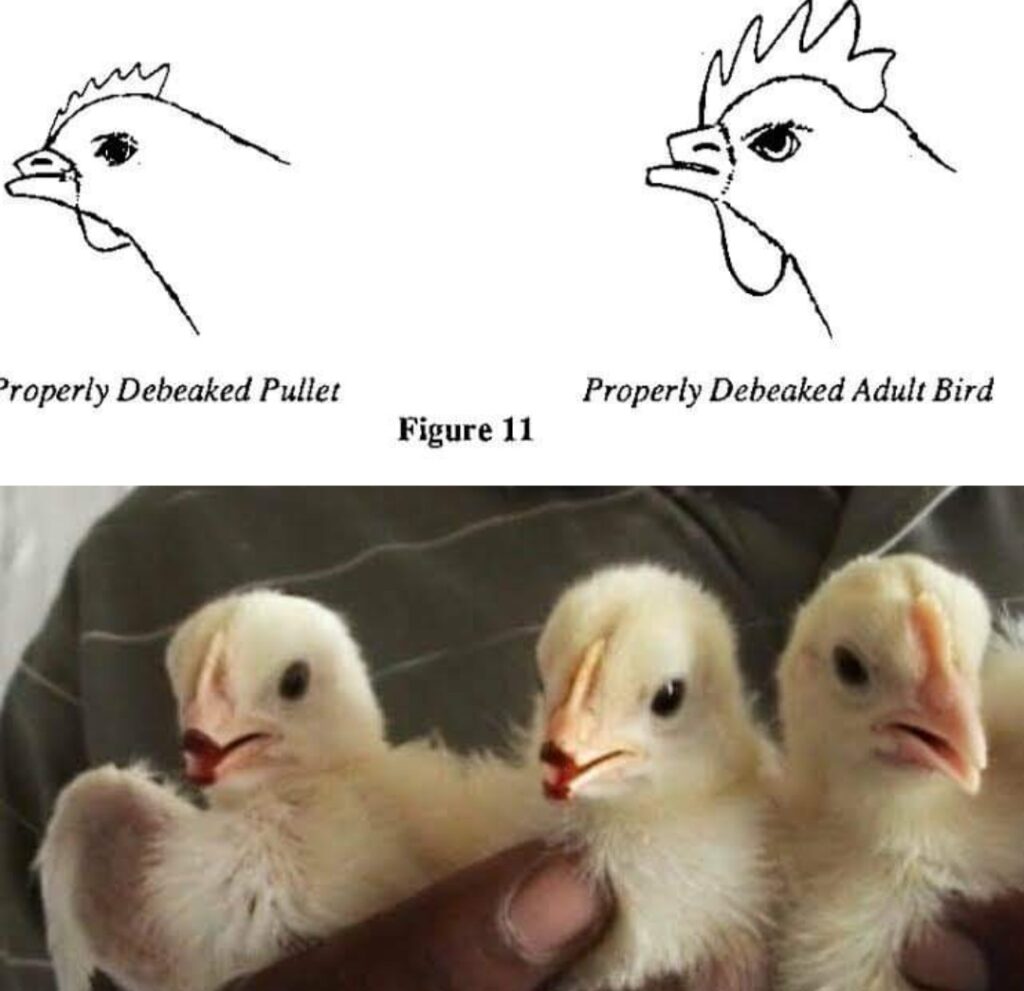
Caring for the layers (after 21 weeks);
At this stage, the layer birds have passed the chicks and growers stages and it’s now ready to start laying eggs. Grower mesh should still be given to the birds until about 10% of them have started laying after which layer mesh should be fed
Enough ventilation should be provided for them.
To avoid damage to eggs, Inspect and collect their eggs 4-5 times per day (depends on their level of production).
Enough water and feed should be given to them, to encourage high production and the water and feed equipment should be leveled to their reach.
Change the litter or used wood shavikngs when necessary and put another new ones to avoid the spreading of disease. Note that the litter can be sold to farmers as compose manure; this serve as an additional income.
Always wash the feeding and watering equipment.
Dead layers should be disposed off immediately.
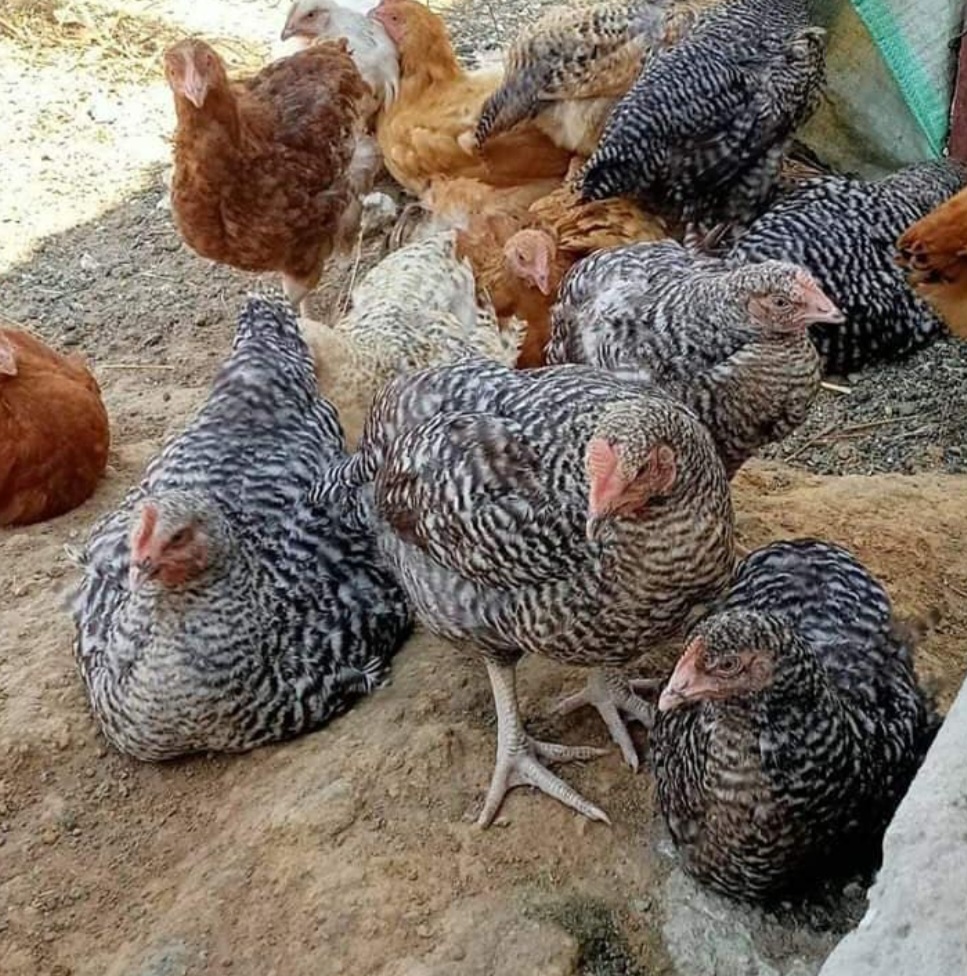
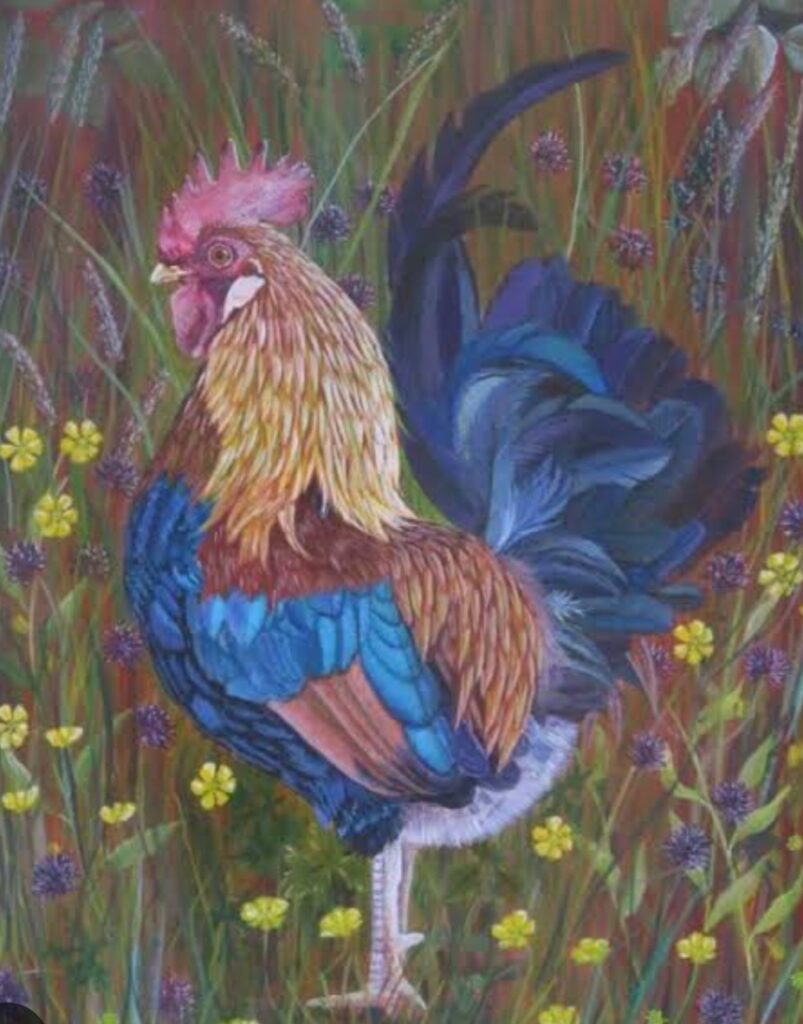
RECORD KEEPING
One of the important management practices a Poultry farmer must emback on is record keeping. All activities carried out from the day the poultry farmer initiated the beginning of his poultry farm business must be recorded and kept properly. Whether it is small scale or large scale poultry farming, record keeping helps in keeping track on all expenses on the business. Therefore, record keeping is the taking of notes on all activities carried out on the farm. This include recording information on water, feed, medication and vaccination and other Management practices carried out on the birds. It also includes documenting any problems or events that happen on your farm. You can use any type of material to keep records. For example, you can use a notebook, use an electronic spreadsheet, or even use a computer program to keep your records.
The record the farmer want to keep depends on the activities the farmer wants to carry out on his farm. For example, egg collection will require egg production record. Daily activities will require farm diary etc
TYPES OF POULTRY RECORDS
FARM DIARY: This is the record of the day to day activities carried out on the farm
PRODUCTION RECORDS: This is the record of all production on the farm E. g egg production
SALES RECORD: This is the record of all sales carried out on the farm
INVENTORY RECORDS: This is the record of all farm assets and liabilities
FINANCIAL STATEMENT
PROFIT AND LOSS ACCOUNT
Examples of financial statements include:
Flock Management Plan
Balance Sheet
Farm Income Statement
Statement of Cash Flow
Poultry Enterprise Budget
appendix A: MONTHLY EGG COLLECTION RECORD
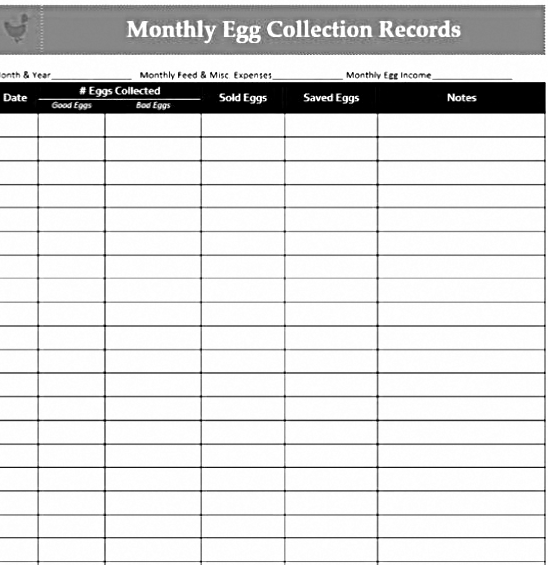
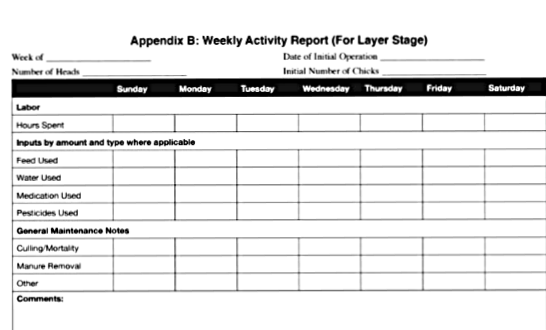
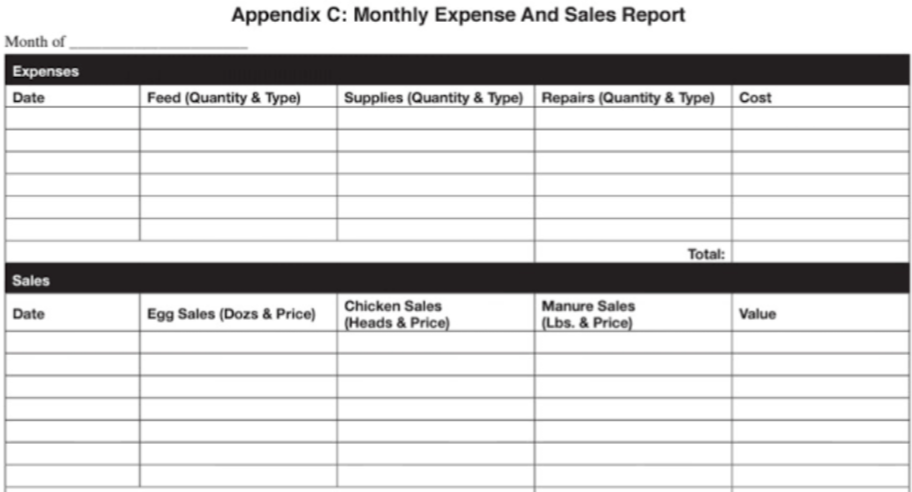
Diseases that can affect your layers
layer birds can be affected by different diseases which could be caused by fungi, bacteria, cold or virus etc. To detect the diseases caused by these pathogens can be difficult, therefore there is the need of a veterinarian so as not to be confused on what to do at first or which medication to use.
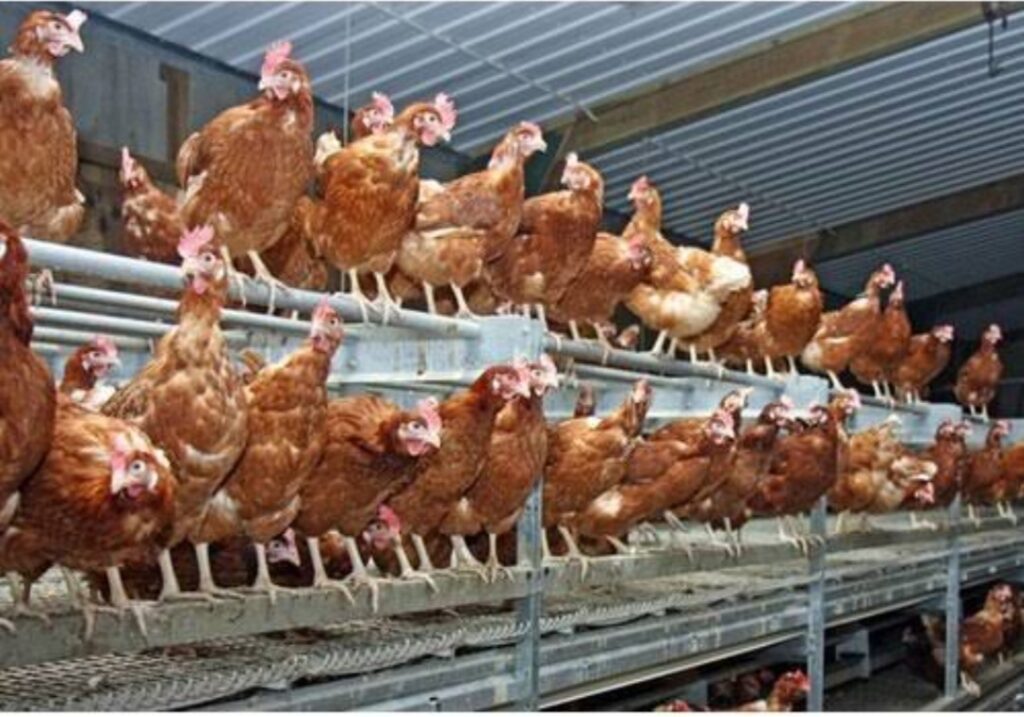
Know that, as times goes on, you will be learning a lot from the veterinarian.
Examples of disease that affect layer birds are:
New castle disease
Marek’s disease
Salmonellisis
Fungal Disease
Colybacillosis etc…
Marketing and selling your eggs
After picking of eggs, they should be arranged neatly in crates ready for customers. Cracked eggs should be separated into a different crates. This command lower price compared to u cracked eggs.
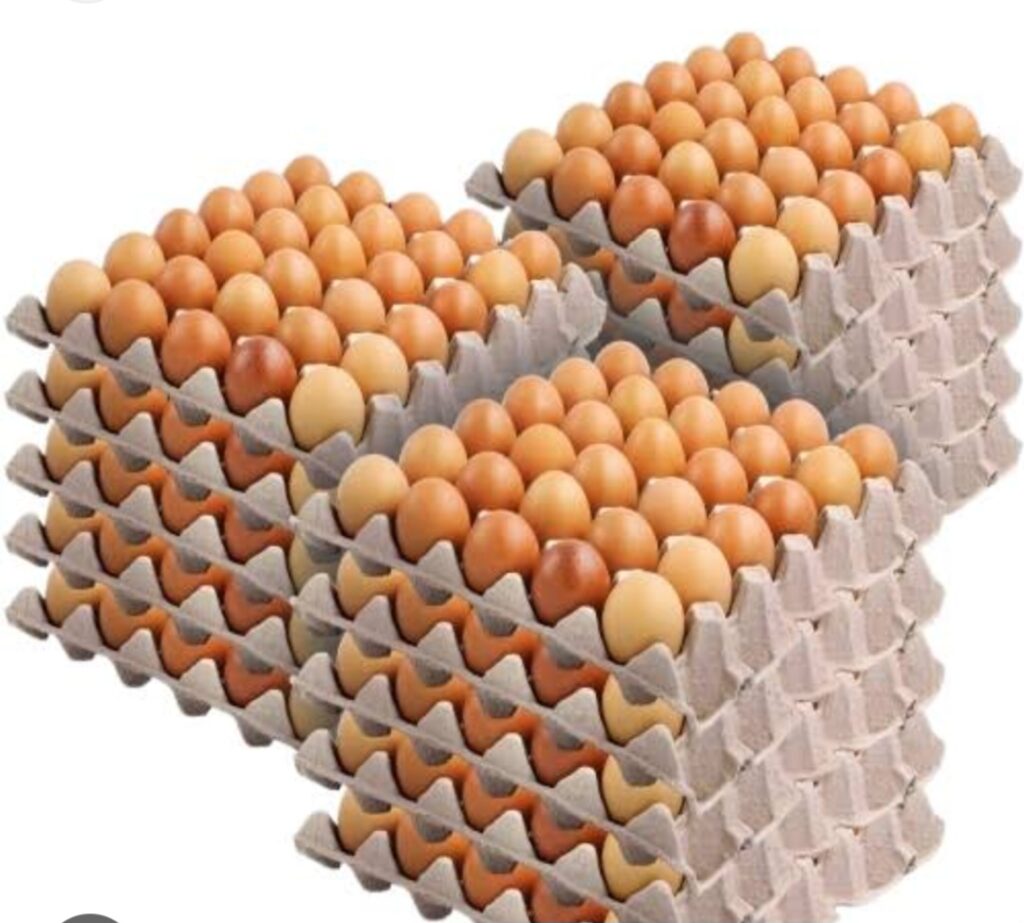
Eggs should be marketed immediately layers start laying to encourage customers and get them aware of the farm. Customers like market women, supermarkets, hotels etc should be targeted for egg purchase from the farm. Gradually, as the eggs increase in number, it will become easy to sell the eggs fresh because the demand from different customers would have increased.
The layer birds would lay for almost two years, therefore, the birds can be sold and the income realised can be re invested into the poultry business.
